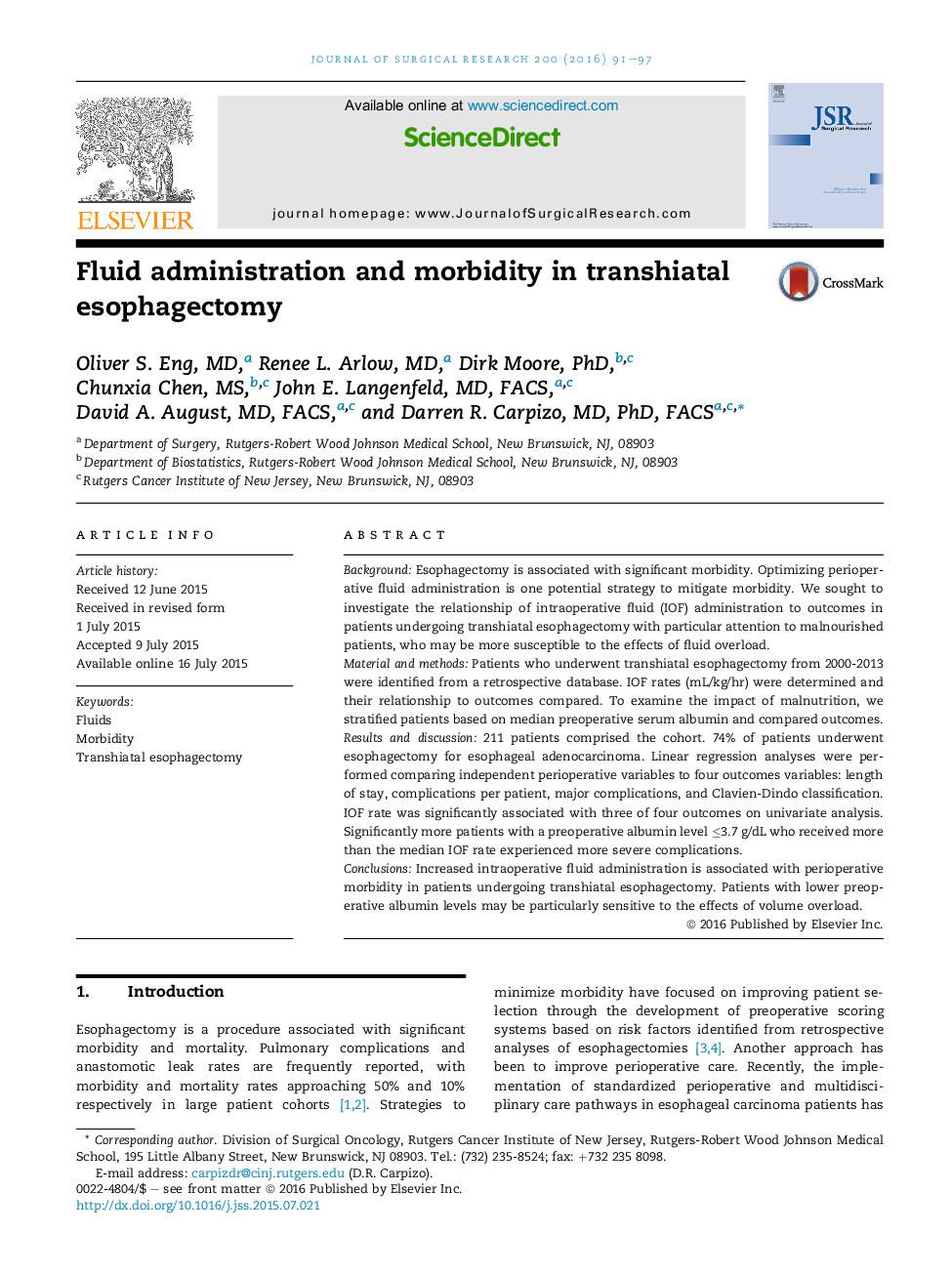| Article ID | Journal | Published Year | Pages | File Type |
|---|---|---|---|---|
| 4299496 | Journal of Surgical Research | 2016 | 7 Pages |
BackgroundEsophagectomy is associated with significant morbidity. Optimizing perioperative fluid administration is one potential strategy to mitigate morbidity. We sought to investigate the relationship of intraoperative fluid (IOF) administration to outcomes in patients undergoing transhiatal esophagectomy with particular attention to malnourished patients, who may be more susceptible to the effects of fluid overload.Material and methodsPatients who underwent transhiatal esophagectomy from 2000-2013 were identified from a retrospective database. IOF rates (mL/kg/hr) were determined and their relationship to outcomes compared. To examine the impact of malnutrition, we stratified patients based on median preoperative serum albumin and compared outcomes.Results and discussion211 patients comprised the cohort. 74% of patients underwent esophagectomy for esophageal adenocarcinoma. Linear regression analyses were performed comparing independent perioperative variables to four outcomes variables: length of stay, complications per patient, major complications, and Clavien-Dindo classification. IOF rate was significantly associated with three of four outcomes on univariate analysis. Significantly more patients with a preoperative albumin level ≤3.7 g/dL who received more than the median IOF rate experienced more severe complications.ConclusionsIncreased intraoperative fluid administration is associated with perioperative morbidity in patients undergoing transhiatal esophagectomy. Patients with lower preoperative albumin levels may be particularly sensitive to the effects of volume overload.
